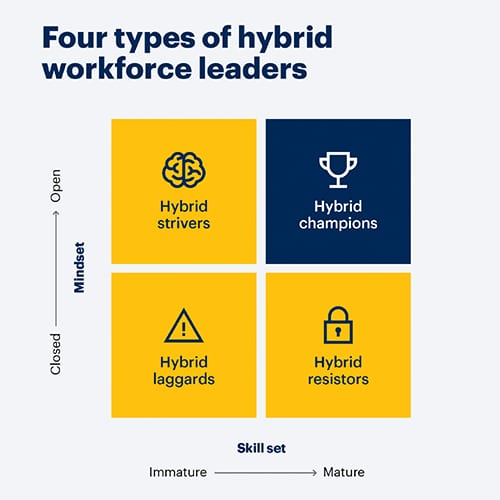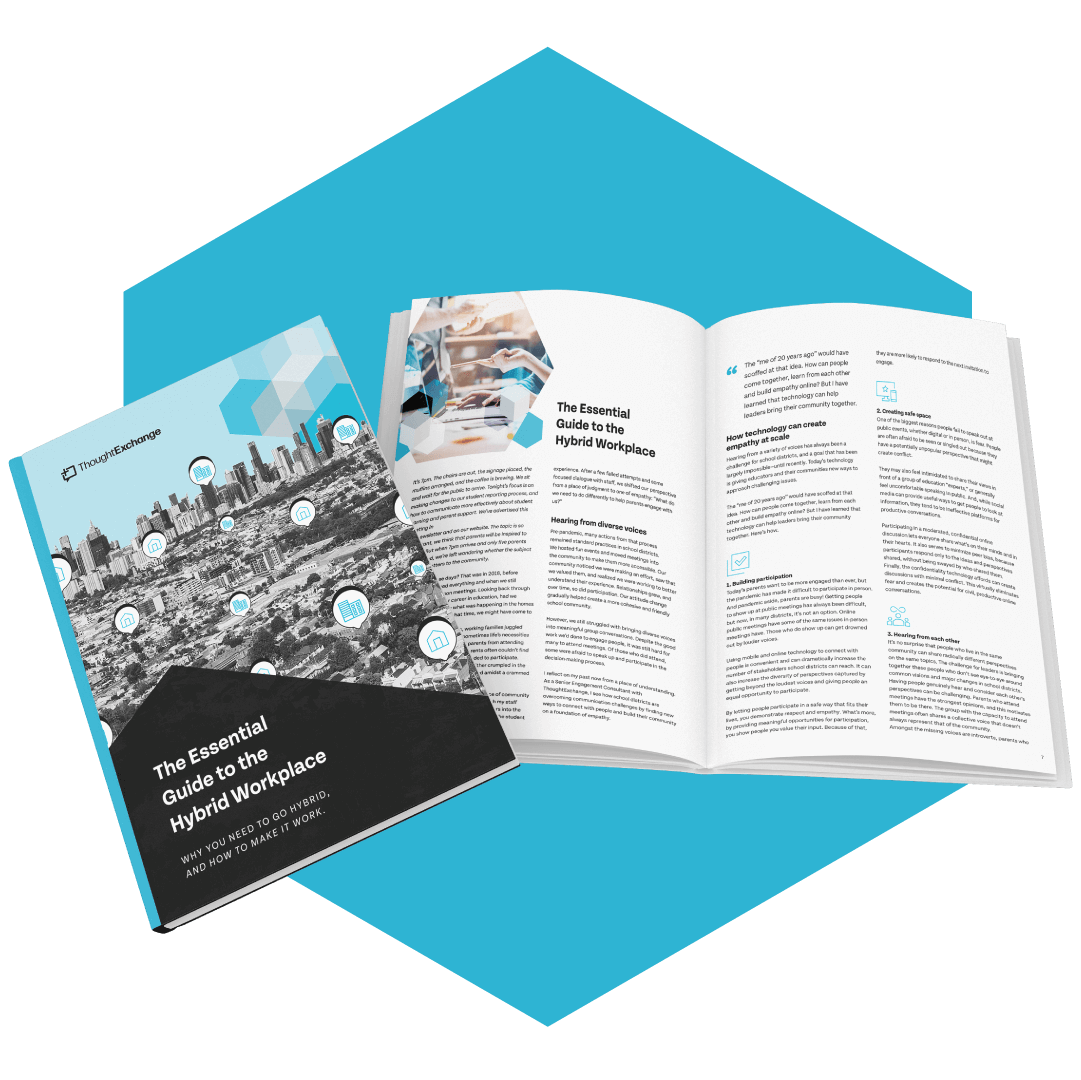







Hybrid Leadership in a Remote and Hybrid Environment
Since COVID-19 disrupted the traditional, in-office, 9-to-5 workday, leaders everywhere adapted their management styles to support remote and hybrid teams. And as we turn the corner on the pandemic, it’s clear that there’s no going back to pre-pandemic norms—90% of HR leaders anticipate the continuation of remote work for at least part of the time.
As a result, the hybrid workforce model has been deemed the “future of work” by analysts and consulting firms worldwide. This permanent shift in how we work has raised questions about today’s leaders’ skills, attitudes, and abilities. For example, have leaders evolved to meet the needs of this new world? And if so, how?
→ Download Now: The Essential Guide to the Hybrid Workplace
This blog post explores the need for hybrid leadership in our new hybrid world and explains how organizations can adopt best practices to upskill existing leaders and hire new hybrid leaders.
- What is Hybrid Leadership
- Challenges of Hybrid Leadership
- Effective Hybrid Team Leadership
- Why Hybrid Leaders Need Collective Intelligence
What is Hybrid Leadership?
Pre-pandemic, hybrid leadership was defined as a style of management that blends the best of traditional male and female leadership styles to lead in authentic, empowered, open, collaborative, strategic, visionary, and nurturing ways. In addition, it focused on developing leaders’ emotional intelligence alongside their business acumen.

Today, that definition has evolved to encompass an even more diverse range of attributes that help managers get the most from employees in remote, in-person, and hybrid teams.
According to Gartner, there are four types of hybrid leaders:
- Hybrid champions have the right mindset and skillset to lead a hybrid workforce.
- Hybrid strivers have the right mindset but lack the right skill set to lead a hybrid workforce.
- Hybrid resistors have the right skill set but a closed mindset toward a hybrid workforce.
- Hybrid laggards lack both the right mindset and the requisite skill set for leading a hybrid workforce.

The best hybrid leaders—the hybrid champions—have the ability, empathy, and patience required to provide each employee with the skills, tools, and support necessary to succeed.
To do this fairly, hybrid leaders must take a unique approach with each employee.
A recent TikTok video offers a good lesson in the type of fairness hybrid leadership requires. On the first day of school, an elementary school teacher asked her students who among them had ever scraped their elbow. She selected one child to tell their story and handed them a band-aid for their elbow. Next, she asked who had ever bumped their head. Again, she called on a student to tell the story of their bumped head and handed them a band-aid...for their elbow. She repeated the process for a scraped knee, and so on.
When the children were sufficiently confused, the teacher stopped the lesson and had a conversation about how, even though she gave everyone the exact same thing in the exact same way, it wasn't helpful to them.
The important lesson here is that fairness doesn't mean everyone gets the same thing. Fairness means that everyone gets what they need to be successful.
This lesson is just as relevant in the hybrid workplace as it is in the classroom.
The Challenges of Hybrid Leadership
The expectation of flexibility is likely to make a hybrid workforce model more prevalent in the post-COVID-19 world. This flexibility is often found in high-performance work cultures, and the right leaders are critical to operationalizing this model effectively.

However, having an organization or team in which some employees are co-located in an office while others do their jobs remotely presents several challenges for hybrid leadership teams—even those already operating in high-performance environments.
Firstly, establishing an effective hybrid workplace requires the right assets, logistics, technology, and policies to ensure the success of everyone, regardless of location.
Other challenges are similar to those faced by geographically distributed teams or teams where some members work at the company headquarters and others in local satellite offices. In these scenarios, there can be challenges with communication, team engagement, and coordination. There can also be an “us versus them” attitude between in-person and remote employees.
The biggest challenge to successful hybrid team leadership, however, is ineffective leaders. According to Gartner, 78% of HR leaders identified leaders’ mindsets as a greater challenge than their skill sets in driving the success of a hybrid workforce model. To address this, examine both the new skills and the right mindsets your leaders require and provide management training accordingly.
Effective Hybrid Team Leadership

Effective leadership in the new hybrid world requires different skills that go beyond traditional team leadership. Specifically, organizations will need leaders who can operate well across two distinct modes. For much of the time, they will operate in virtual mode. As such, the skill sets required in a hybrid leader include the ability to:
1. Drive performance without close monitoring or supervision
If some or all employees are remote, driving performance without virtual micromanagement requires two things: clear expectation setting and trust.
Once employees clearly understand their role and how their performance is measured—and they have the skills and tools to meet their objectives—get out of their way. This doesn’t mean you shouldn’t have regular status updates or check-ins. You should still have them—but you also need to trust that they will do what they say they will do.
With clear direction and support, if they don’t perform, there should be processes in place to address the issues.
2. Champion employee development
Ensure that you equip employees with the skills needed to drive current and future performance. As with the band-aid lesson above, this will look different for everyone. Communicate the employee development initiatives that are available internally and externally and provide mentorship where it is needed and valued most.
Further, ensure all employees have a high-visibility level to management, where appropriate. Visibility (i.e., being seen by those in power) is often shaped by an employee’s location—especially their location relative to their boss and senior managers. For remote employees, ensure they have equal access to share their progress, initiatives, and learnings with senior teams.
3. Communicate effectively across a variety of channels
According to the MIT Sloan Management Review, the nature and mix of teams and their tasks will dictate the communications channels which hybrid leaders use. For example, teams that can work interdependently but without much integration—i.e., teams responsible for reporting, performing administrative tasks, making simple decisions, sharing information, drafting documents, and performing financial analyses—can be communicated with virtually via Slack and Zoom.
Likewise, most one-on-one interactions between leaders and their direct reports, including some coaching, can be accomplished effectively through virtual communications.

Even essential tasks that require team members to integrate their knowledge can now be done productively in virtual channels if the right tools are in place. For example, team efforts to achieve breakthrough innovation, solve complex problems, build culture, and manage conflicts are traditionally performed much more effectively in person. But with the right technology—like enterprise discussion management platforms—they can be performed just as effectively virtually.
4. Empower employees to contribute by connecting remote workers with their in-office and remote colleagues
Create inclusive team climates, independent of employees’ work location, by connecting people with one another and supporting them all to contribute and be productive. For example, implement some of the many new communication and collaboration platforms that facilitate asynchronous work among people in different time zones or on different work schedules.
Build trust and psychological safety so dispersed workers feel safe sharing their challenges with their teams for collective problem-solving. For example, run virtual workshops where people can get to know one another better and learn one another’s skill sets and strengths.
Why Hybrid Leaders Need Collective Intelligence
When people come together to collaborate or solve problems, they form a level of collective intelligence that just isn’t possible at the individual level. Technologies like surveys and polls are often touted as ways to facilitate collective intelligence in hybrid workplace environments. Still, they are both inadequate when you need unbiased answers to time-sensitive, mission-critical questions.

Using an enterprise discussion management tool like ThoughtExchange can help you tap into the collective intelligence of your hybrid workforce. By creating an Exchange, you can ask an open-ended question about culture, innovation, employee feedback, etc. Participants can anonymously share their answers and objectively rate each other’s responses and ideas.
ThoughtExchange has built-in anti-bias technology and multilingual capabilities, so the most popular responses rise to the top, regardless of who shared them. The platform is also packed with tools to help you map out, schedule, set deadlines for submissions, and analyze results.
If you are a hybrid leader or are supporting a hybrid leadership team, ThoughtExchange is a valuable tool to connect and engage employees, regardless of their location.




